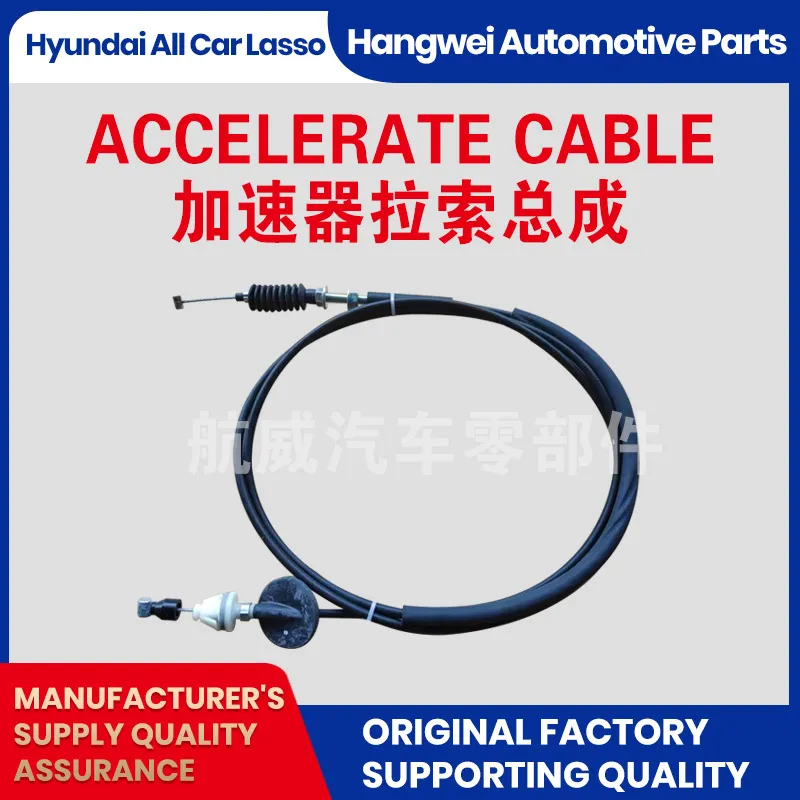Tips for Properly Adjusting Your Throttle Cable for Optimal Performance
Adjusting the Throttle Cable A Comprehensive Guide
The throttle cable plays a crucial role in the performance of various motor vehicles, ranging from cars to motorcycles. It is the connection between the throttle pedal (or grip in the case of motorcycles) and the throttle body or carburetor. Essentially, the throttle cable controls how much air-fuel mixture enters the engine, which directly influences acceleration and overall engine response. Over time, the cable can stretch, fray, or wear out, leading to a less responsive throttle or even stalling issues. Therefore, knowing how to adjust the throttle cable is an essential skill for any vehicle owner or enthusiast.
Understanding the Throttle Cable
Before diving into the adjustment process, it’s important to understand how the throttle cable works. When you press the accelerator pedal, the cable pulls on the throttle body, allowing more air into the engine. This increase in airflow leads to a proportional increase in fuel intake, causing the engine to produce more power. If the throttle cable is not properly adjusted, you may find that pressing the accelerator does not yield the expected responses.
Signs of a Misadjusted Throttle Cable
Several signs indicate that your throttle cable may need adjustment - Unresponsive Acceleration If pressing the gas pedal does not lead to an immediate response from the engine, it may indicate slack in the cable. - Sticking Throttle A cable that is too tight can lead to a sticking throttle, making it difficult to maintain speed. - Unusual Engine Stalling If the engine stalls unpredictably, it might be due to a throttle cable that isn’t providing a consistent signal.
Tools Required
Before starting the adjustment, you'll need the following tools - A wrench set - Screwdrivers (flathead and Phillips) - Pliers - Safety gloves - Possibly a throttle cable adjustment tool (if available)
Step-by-Step Adjustment Process
adjusting throttle cable

1. Locate the Throttle Cable First, identify the throttle cable, which typically runs from the accelerator pedal to the throttle body. This varies by make and model, so consult the owner's manual if necessary.
2. Check for Damage Before making any adjustments, inspect the throttle cable for fraying, corrosion, or damage. If you find any significant wear, consider replacing the cable instead of adjusting it.
3. Loosen the Cable Adjuster Most vehicles have an adjustment point where you can modify the tension of the throttle cable. Locate this adjuster—often found near the throttle body or on the cable itself. Use your wrench to loosen the locknut without removing it completely.
4. Adjust the Tension Pull or push the cable until you achieve a slight amount of slack—generally about 1/8 inch. This slack is necessary to ensure that the throttle is not constantly engaged, which could cause the engine to race. If you find excessive slack, pull the cable tighter.
5. Re-tighten the Adjuster Once you’re satisfied with the tension, re-tighten the locknut securely. Make sure the cable doesn’t move while you perform this step.
6. Test the Throttle Before closing the hood, press the accelerator pedal several times to ensure smooth operation. The throttle should return to its closed position without sticking and should provide a responsive feel during acceleration.
7. Take for a Test Drive Finally, take the vehicle for a short test drive to ensure the throttle responds appropriately. Monitor for any signs of delay or sticking, and make further adjustments if necessary.
Conclusion
Adjusting the throttle cable is a relatively simple task that can significantly improve your vehicle’s responsiveness and drivability. Regular maintenance, including checking and adjusting the throttle cable, can prevent more serious issues and ensure your vehicle remains in optimal condition. Whether you are a seasoned mechanic or a novice, understanding how to perform this adjustment empowers you to take better care of your vehicle and enhances your overall driving experience. If issues persist even after adjustment, consulting a professional mechanic is advisable.
-
Workings of Clutch Pipe and Hose SystemsNewsJun.04,2025
-
The Inner Workings of Hand Brake Cable SystemsNewsJun.04,2025
-
The Secrets of Throttle and Accelerator CablesNewsJun.04,2025
-
The Hidden Lifeline of Your Transmission Gear Shift CablesNewsJun.04,2025
-
Demystifying Gear Cables and Shift LinkagesNewsJun.04,2025
-
Decoding Clutch Line Systems A Comprehensive GuideNewsJun.04,2025
